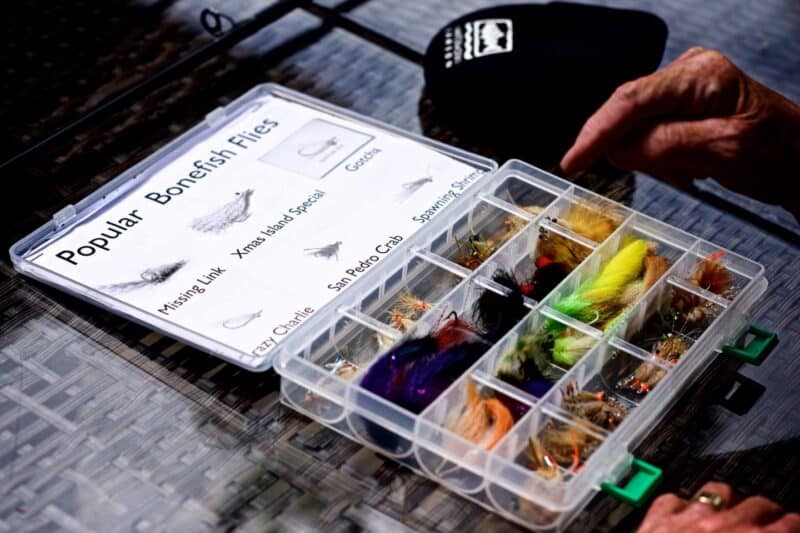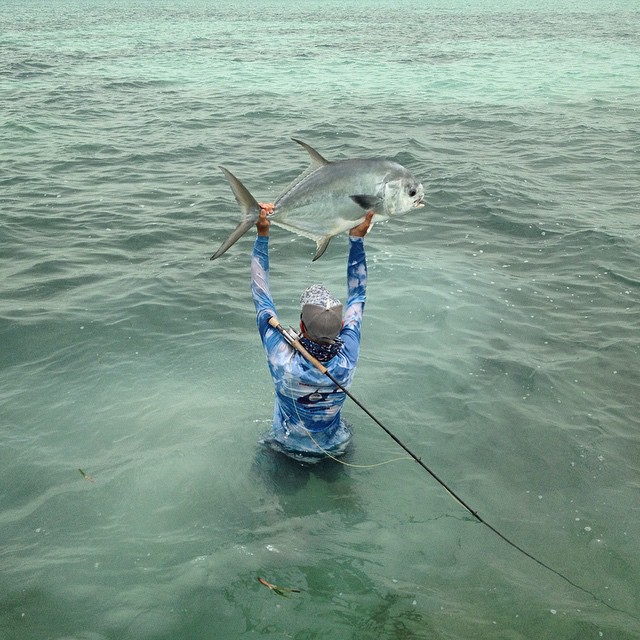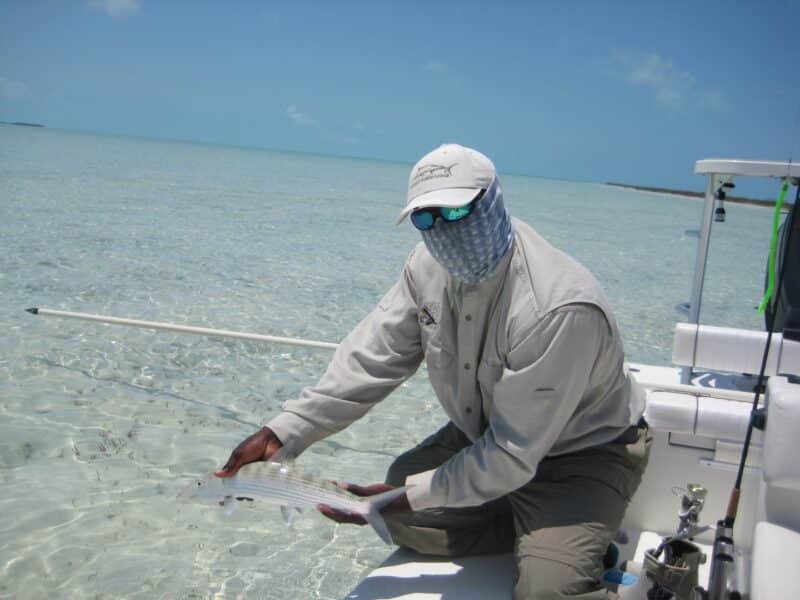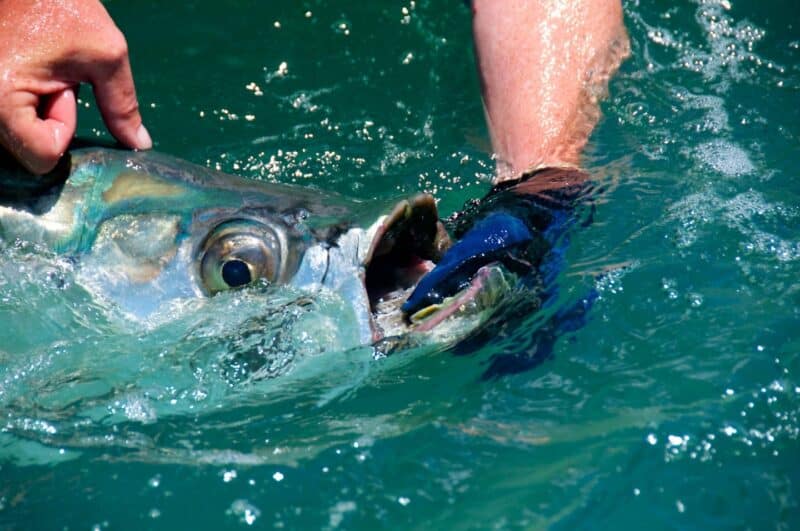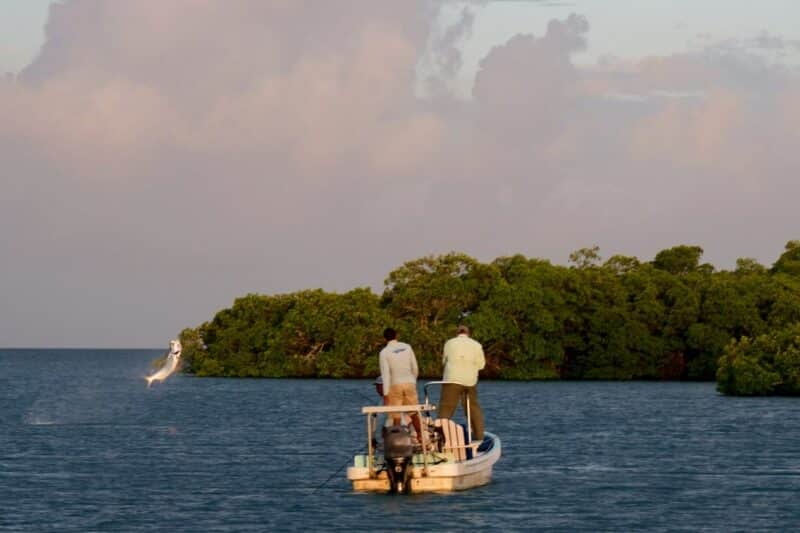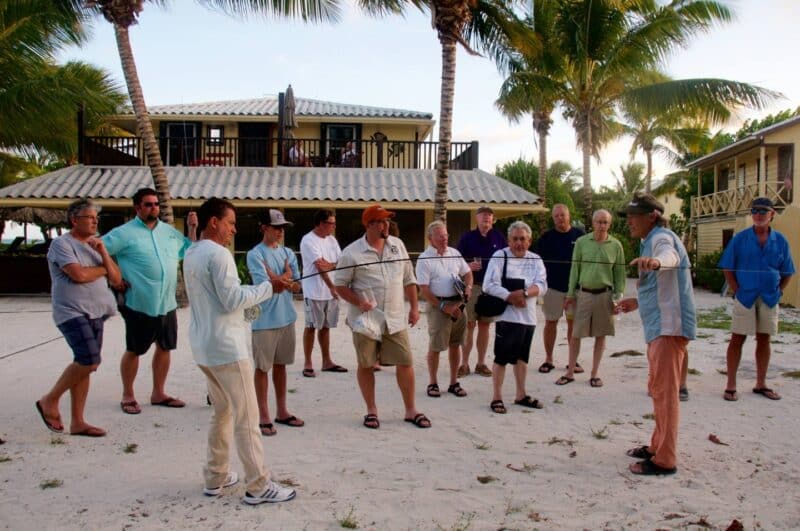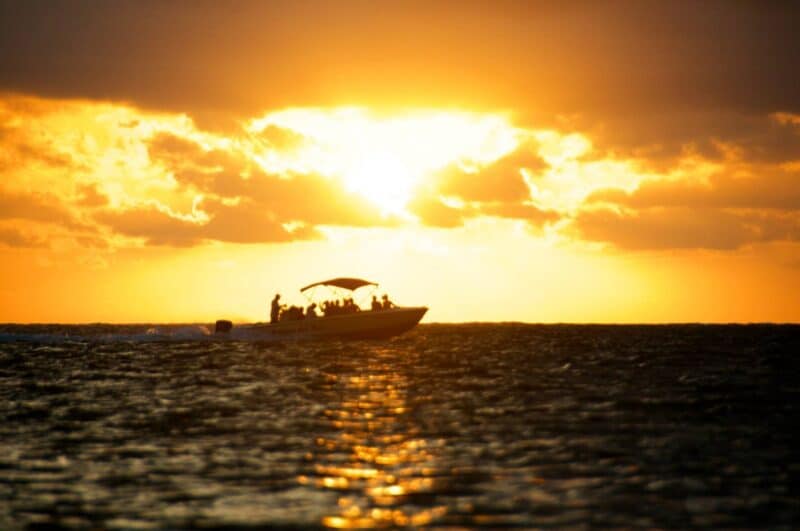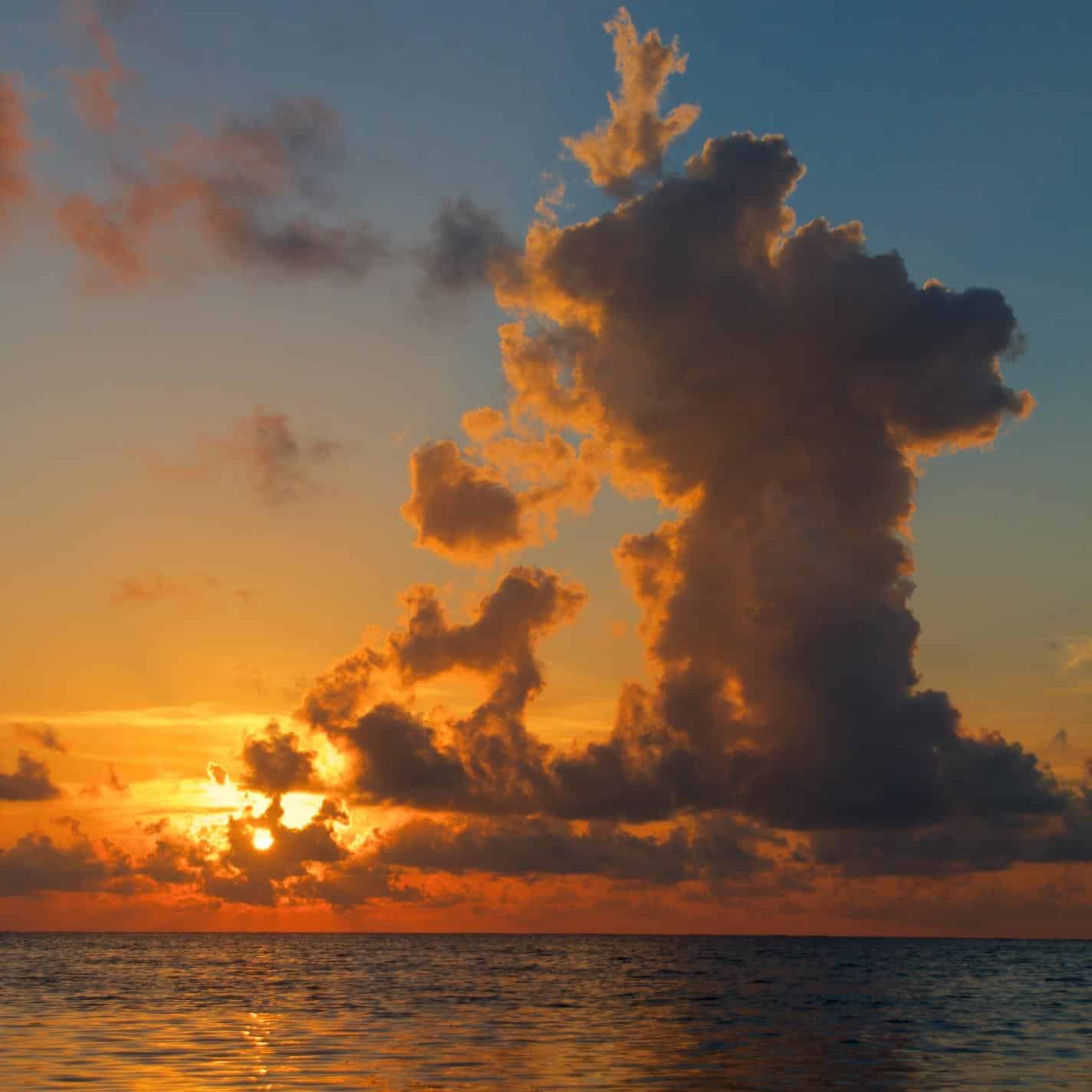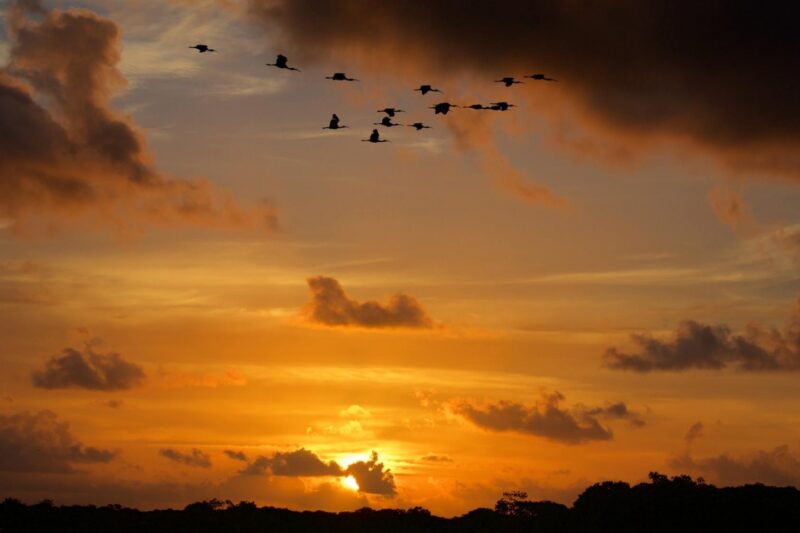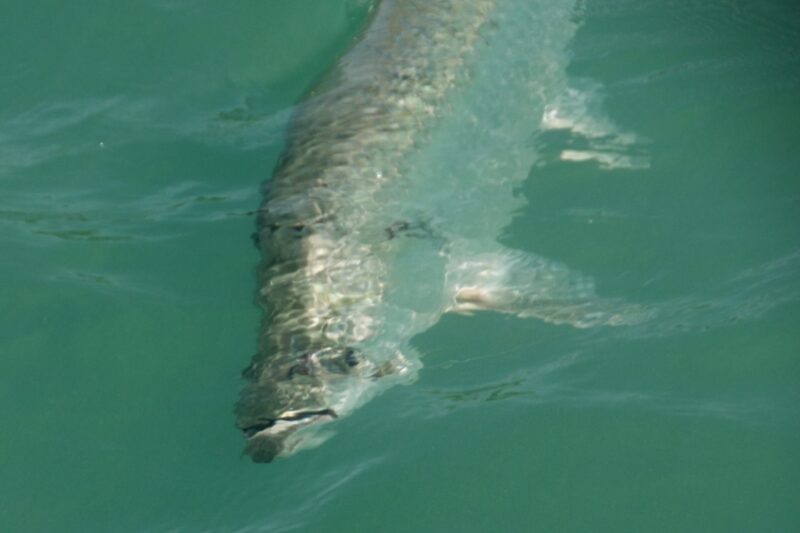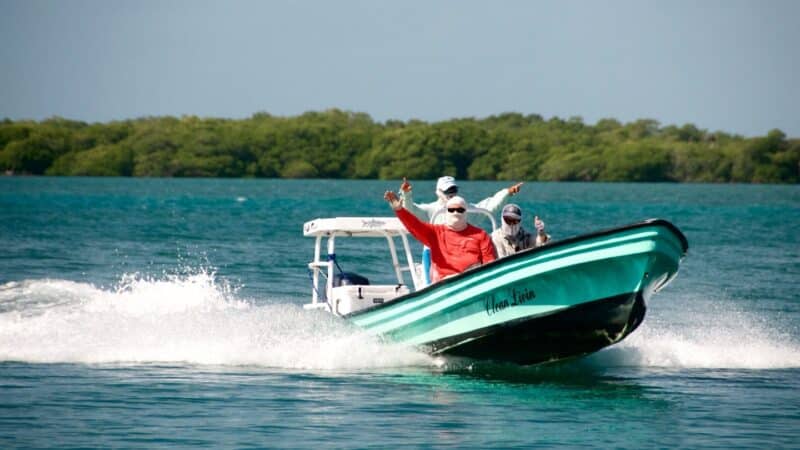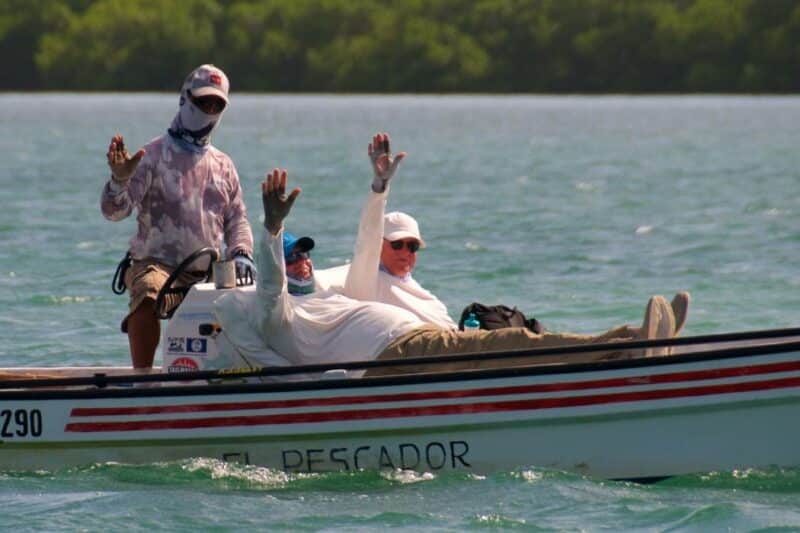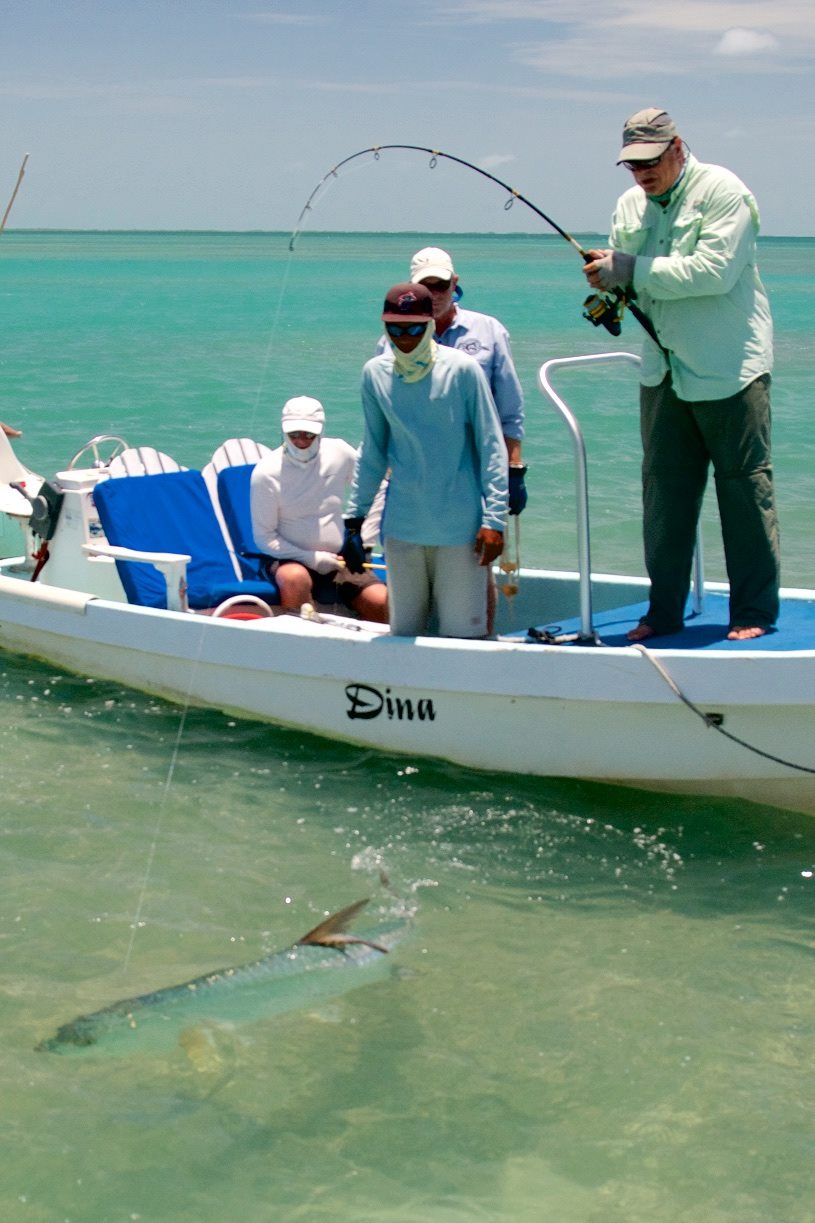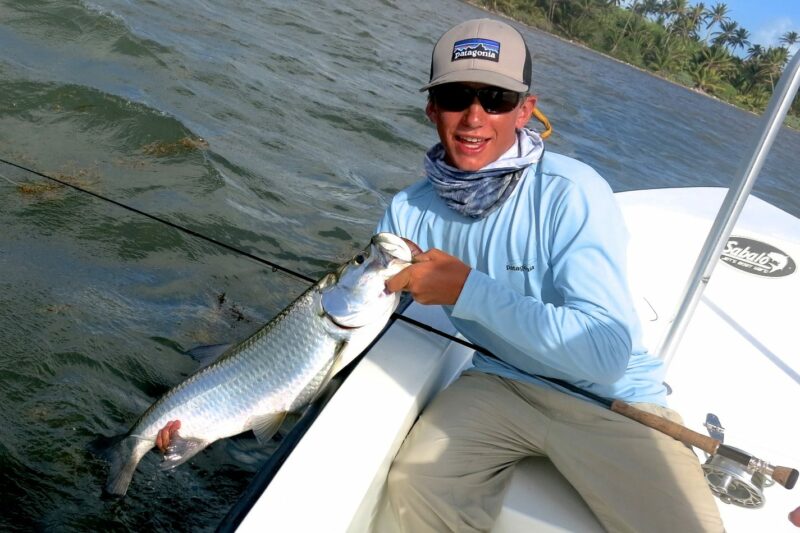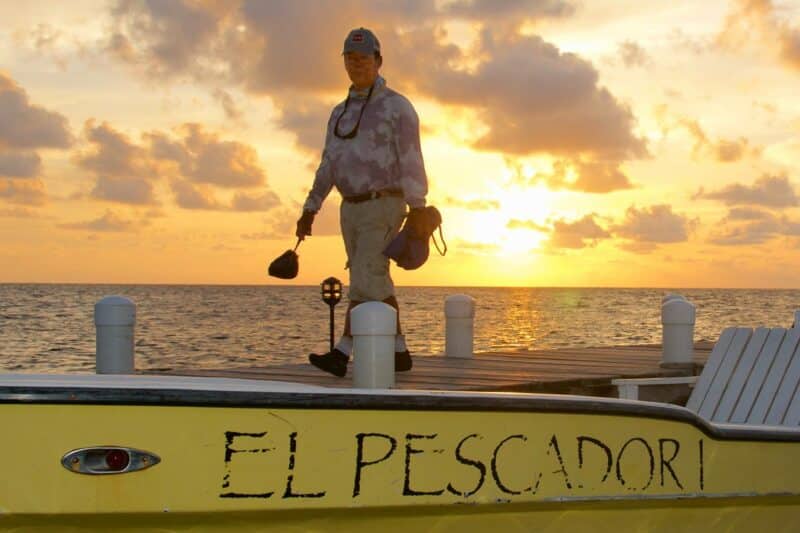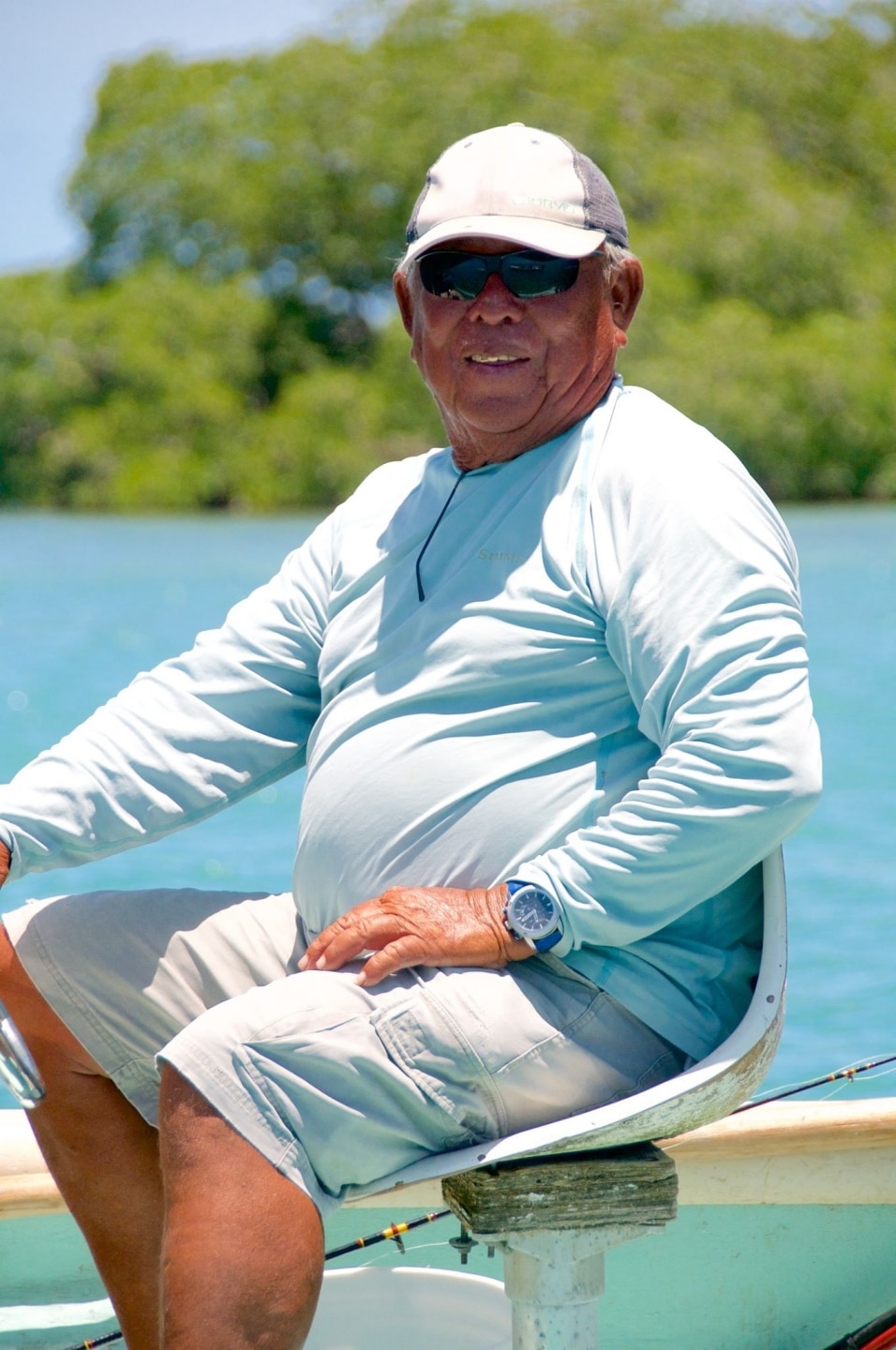Tagging Giant Tarpon In Belize: These Fish Are Important Yet Shockingly Mysterious
FLY FISHING IS HUGE IN BELIZE! Fishermen from around the world flock to the flats of our country for the “Grand Slam” – catching the permit, the bonefish and the tarpon all in one trip. And a few do…and have the pictures to prove it.
Here is a lovely permit…my personal favorite of the three.
Fly fishermen are easy to spot. Usually as soon as he or she deplanes in San Pedro. Metal fly rod tubes covered in stickers touting far off fly-fishing lodges in places like Christmas Island and Cuba, technical clothing from head to toe to cover their pale skin – pants that unzip into shorts, everything easy-dry, hats with flaps and always some sort of mixture of a cravat/turtleneck/bandito mask.
Many come to the island year after year.
Now that you know how to spot the fisher folk, let me get to the real topic – something not so easy to spot. The largest of “The Grand Slam” BY far, the mysterious tarpon. A fish that grows to up to 75 years old. Up to 250lbs. Breathes oxygen from the air. And is lucky enough to be deemed “not good eats” – bony, oily and just…fishy.
But because of that fact, we don’t know much about them. They migrate…but where? Since they are so valued as game fish (CATCH and RELEASE only in Belize) because of their beauty and acrobatic fight, the research has started to find out more about these silver giants.
A few weeks ago, a group of fly fishers assembled at the famous El Pescador Lodge on Ambergris Caye to officially tag some of the large migratory fish. In collaboration with scientists at the University of Miami, they hope to gather as much data as possible from fish around the Caribbean and around the world. To help protect them for years to come…
The official press release is below. With all of the details on the tagging, the group, how you can get involved and the science. It’s super interesting to me and I can’t wait to see some of the results…but for those who like photos, here are a bunch from Adam and his team, The Fieldworkers Club. Follow them on Facebook for lots more.
Learning how to bring in a big fish quickly at El Pescador.
The team.
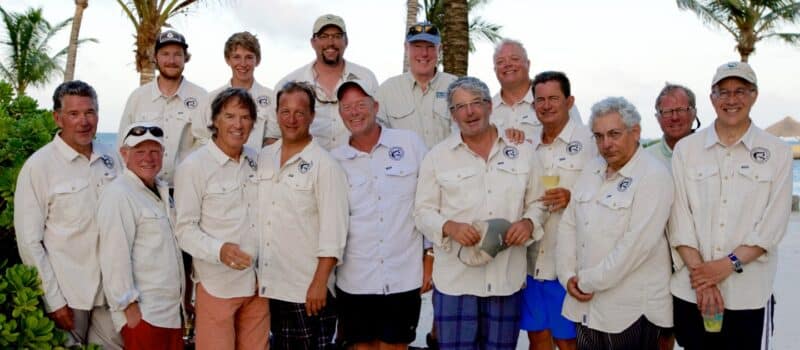 Leaving before dawn has its perks…
Leaving before dawn has its perks…
Sunset’s not bad either – especially when a flock of spoonbills? go by.
The masks crack me up.
This fishing stuff looks easy!
The bottom line is that these fish are economically important to Belize. Fly fishing is a big industry employing many VERY skilled Belizean tour guides (not just on Ambergris Caye) and bringing money into the country. We want to protect these fish. And to do so, we need to know where they travel so that we can help strengthen regulations regionally and world wide.
Alex, a third generation San Pedrano guide.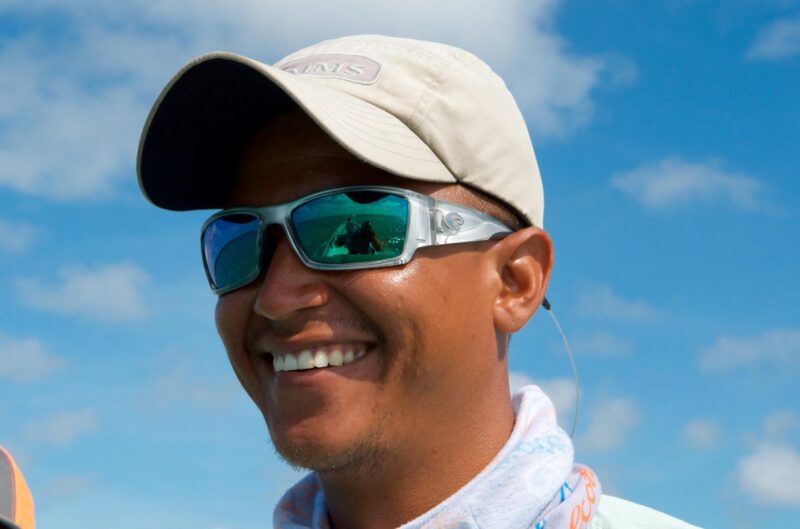
This tagging expedition is an important step and…
Here is the official press release:
The Fieldworkers Club 2015 Belize Tarpon Tagging Expedition has concluded with unparalleled success. Led by Adam Marton and Andy Mill, 17 anglers from all over the United States, working in partnership with scientists from the Tarpon and Bonefish Research Center at the University of Miami, went to northern Belize with the goal of deploying satellite tags on adult migratory tarpon. This year’s expedition occurred out of El Pescador Lodge and Villas from August 15th – 22nd.
These dates were chosen a year ahead of time to coincide with suspected peak migratory tarpon population numbers, optimal moon and tide phases, stable weather patterns and angler availability.
The expedition team hooked or landed a total of 44 tarpon ranging in size from approximately 15-150 pounds. Expedition Leader Adam Marton said “That is an important number as it represents the overall number of opportunities for tagging. It’s also important to note that 44 tarpon is more than double the combined tagging opportunities of the 2013 and 2014 expeditions. Of the 44 fish hooked, more than a dozen not landed were estimated to be of taggable size (80-pounds or over). The increase of these numbers can be attributed to many factors, including: greater numbers of tarpon, increased angler skill level, favorable weather conditions, and concentrated fishing in the most populated tarpon habitats.”
In the end, three satellite tags were successfully deployed on adult tarpon in Northern Belize. On August
19th an 80-pound tarpon was safely released at 7:35 a.m. with a SPOT tag. On August 21st at 7:40 a.m. a 90-pound tarpon was also tagged with a SPOT and released. At 12:40 p.m. that same day, in the 11th hour of the expedition, a third tarpon estimated at 110-pounds was released with a PAT tag. All fish were revived for more than 40-minutes after landing using a process developed by scientists at the University of Miami, released and swam strongly away from the tagging boat into the open ocean. Expedition Leader, Adam Marton, says, “three might not sound like a big number, but in fact it’s a huge number and one we’ve been trying to get to for 4 years. Imagine all the challenges involved in actually getting a large group of anglers to pack their bags, get on an airplane and come to Belize to participate in an expedition at their own cost. Then, consider all the factors standing in the way of actually landing a huge tarpon. Finally, add in a tagging boat, safety, communications, weather and well, it’s fishing … There are many plates spinning in the air at once to make this all work, and of course, the stars must align. I am grateful to and totally impressed by the dedication of the anglers and guides who dug in, fully participated in this years expedition and made it the total success that is was. No one person can make this effort a success, it’s the combined efforts of the entire team that made these amazing accomplishments possible.”
1043 North Honore Street, Chicago, IL 60622 312-440-1200 www.fieldworkersclub.com
Exactly what the future holds for these three tarpon is unknown. But as a result of these expedition efforts the scientific and resource management community is now in a more powerful position to begin to collect factual data about tarpon in Central America than it was even 3-weeks ago. The ground breaking news is that we have heard from the SPOT tags on 2 of the tarpon. They appear to be working, the fish look to be resuming normal behavior and reports continue to come in from the tags. Tarpon number 3 has a PAT tag, which works differently and is preprogrammed not to report until some time down the road. Combined, these two cutting edge technologies (all being well) will start to answer the $64,000-tarpon question, “are our fish their fish?”… as well as many, many more. The hope is this research effort will open the door to a better understanding of critical tarpon habitats, usage patterns and migration routes for fishes in this part of the world. We also hope these efforts will help to support the multi-generational legacy of tarpon fishermen for decades to come. Recreational tarpon fishing started in Florida in the 1880’s. It has grown to be a multi-hundred-million-dollar industry that is enjoyed by tens of thousands of anglers from all over the world and in many parts of the world. It turns out that tarpon do not acknowledge federal, state or regional political borders as they make their annual migrations, which seem to be a key factor in the success of the species. Therefore, the global resource management community that makes critical decisions about how to protect this important resource must be armed with fact based data from all over the tarpon’s range to support their federal, regional and local policy making efforts.
The success of this and other efforts like these rely upon a critical partnership between anglers and scientists. The reality is anglers are anglers and scientists are scientists. Each has their strengths to offer each other in very practical terms. This is a powerful collaboration for both communities. The tagging program of the University of Miami is now over ten years old, and more than 400 individual tarpon have been tagged in Belize, Mexico, Trinidad, Nicaragua, Florida, North and South Carolina, Alabama, Mississippi, Louisiana and Texas. For more information about the tagging program, please contact Dr. Jerry Ault at the Tarpon and Bonefish Research Center, University of Miami at [email protected] or 305-421-4884.
August 13-20, 2016, will bring a new Belize Tarpon Tagging Expedition and once again it will be headquartered out of El Pescador Lodge and Villas.
For more information about the 2015 or 2016 expeditions, please contact; Adam Marton, The Fieldworkers Club [email protected] 312-440-1200 www.fieldworkersclub.com
The Fieldworkers Club – A critical partnership between anglers and scientists that conducts recreational fisheries research fieldwork in oceans, lakes and watersheds all over the world. We lead scientific fly-fishing expeditions with a mission. www.fieldworkersclub.com
Posted in:
